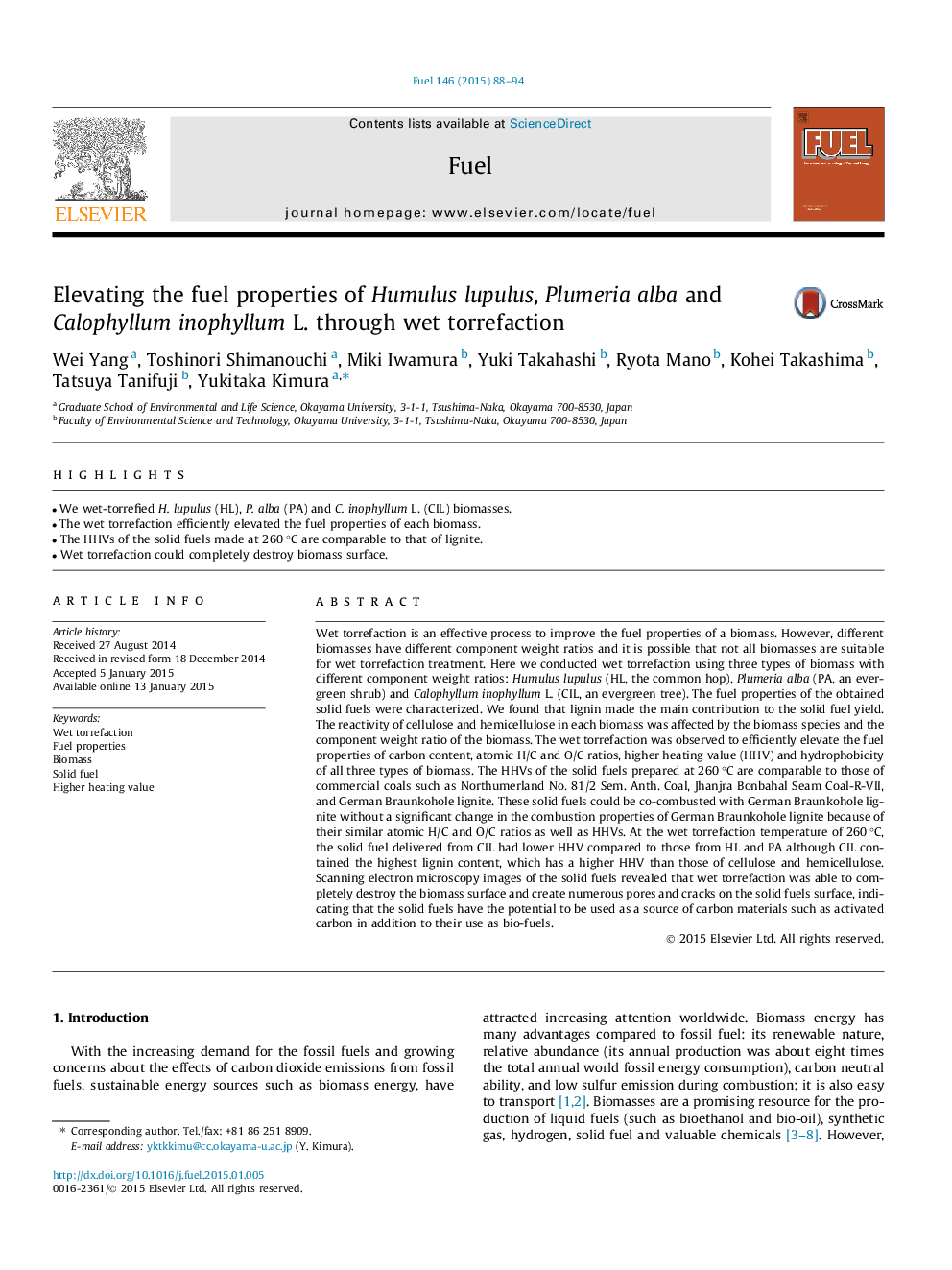| Article ID | Journal | Published Year | Pages | File Type |
|---|---|---|---|---|
| 205982 | Fuel | 2015 | 7 Pages |
•We wet-torrefied H. lupulus (HL), P. alba (PA) and C. inophyllum L. (CIL) biomasses.•The wet torrefaction efficiently elevated the fuel properties of each biomass.•The HHVs of the solid fuels made at 260 °C are comparable to that of lignite.•Wet torrefaction could completely destroy biomass surface.
Wet torrefaction is an effective process to improve the fuel properties of a biomass. However, different biomasses have different component weight ratios and it is possible that not all biomasses are suitable for wet torrefaction treatment. Here we conducted wet torrefaction using three types of biomass with different component weight ratios: Humulus lupulus (HL, the common hop), Plumeria alba (PA, an evergreen shrub) and Calophyllum inophyllum L. (CIL, an evergreen tree). The fuel properties of the obtained solid fuels were characterized. We found that lignin made the main contribution to the solid fuel yield. The reactivity of cellulose and hemicellulose in each biomass was affected by the biomass species and the component weight ratio of the biomass. The wet torrefaction was observed to efficiently elevate the fuel properties of carbon content, atomic H/C and O/C ratios, higher heating value (HHV) and hydrophobicity of all three types of biomass. The HHVs of the solid fuels prepared at 260 °C are comparable to those of commercial coals such as Northumerland No. 81/2 Sem. Anth. Coal, Jhanjra Bonbahal Seam Coal-R-VII, and German Braunkohole lignite. These solid fuels could be co-combusted with German Braunkohole lignite without a significant change in the combustion properties of German Braunkohole lignite because of their similar atomic H/C and O/C ratios as well as HHVs. At the wet torrefaction temperature of 260 °C, the solid fuel delivered from CIL had lower HHV compared to those from HL and PA although CIL contained the highest lignin content, which has a higher HHV than those of cellulose and hemicellulose. Scanning electron microscopy images of the solid fuels revealed that wet torrefaction was able to completely destroy the biomass surface and create numerous pores and cracks on the solid fuels surface, indicating that the solid fuels have the potential to be used as a source of carbon materials such as activated carbon in addition to their use as bio-fuels.
